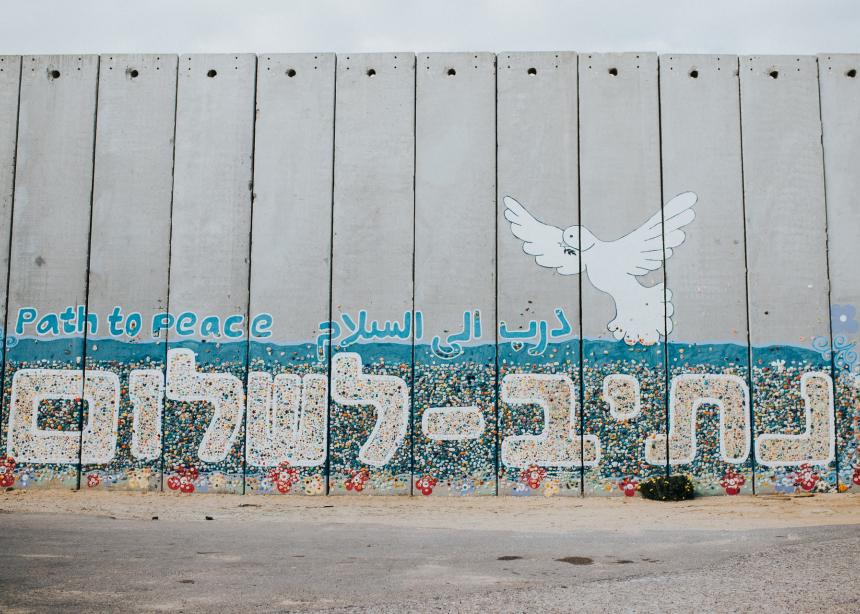Whether you know the word or not, shalom is central to the way most Mennonites think of what it means to be disciples faithful to Jesus. “Peace” is how the Hebrew word shalom is often translated.
Eminent theologian Walter Brueggemann says that shalom is the foundational message of the Bible, and the intended purpose of Jesus’ vision of the kingdom of God. He explains that shalom captures the “persistent vision of joy, well-being, harmony, and prosperity” and all the complexity and nuances that involve “love, loyalty, truth, grace, salvation, justice, blessings, righteousness.”
Wow—that is a lot of work for one word! Translating shalom simply as peace misses some of the word’s richness. Most importantly, shalom is applied; it means living well together in the land.
I recently had the opportunity to compare two books on shalom. Mennonite theologian Perry Yoder and American Indigenous biblical scholar Randy Woodley have much in common. But Woodley’s Indigenous perspective will particularly help non-Indigenous Mennonites develop broader notions of discipleship, faith, and peacemaking. It is an example of the richness of diversity that God has allowed to develop within the world’s many cultures.
Usually, when we think about peace, we imagine peace among the humans in the world. Woodley extends shalom beyond the human community, to the entirety of the “community of creation.” He also addresses colonization and colonialism as ongoing barriers to shalom.
Yoder does not mention them, although his book also includes a strong call to change socioeconomic structures that short-circuit shalom. Shalom is the common good. It connects climate change, racial justice, COVID-19 health care and masks, caring families, mental health, and Indigenous-settler reconciliation. We are all better when all of us are well and healthy, and society is just, and when human usage does not overwhelm the world’s resources.
Both Woodley and Yoder emphasize that shalom includes all of material and spiritual needs, social relations, and moral character. Shalom is never individual—it is living well together. Woodley includes human beings, animals, and plants in these relations.
Shalom is liberation of all who are caught in oppression, whether that is bondage to sin or to injustice—anything that reduces joy, well-being, harmony and prosperity.
The reason I use the phrase “living well together in the land” is that it requires us to ask questions of what is included in each of the words. What does living well mean? Who is included in the we living together? Being in the land puts these actual lived relations into concrete places. It shows that ecological sustainability and social justice are intrinsically and inextricably linked, which is God’s desire for shalom.
As a Christian, I am hopeful in Jesus and aware of the resources of our religious tradition. As a social scientist, I am keenly aware of the loads of research showing ways toward shalom. For example, social equality has benefits for the poor and the rich, according to solid research. Nonviolent strategies for building peaceful societies or preventing coups have been widely examined, tested, and implemented.
In the midst of these challenges, we would do well to remember that the goal is the process of living well together in the land. If the community of all creation is the “we” and shalom is equivalent to “living well,” then the land is the site of our mission, and we do it together.
Randolph Haluza-DeLay attends First Mennonite Church in Edmonton. A longer version of this article will appear in the fall issue of Anabaptist Witness (anabaptistwitness.org).
Read more Mind and Soul columns:
Learning from Quakers
Why I'm not a Canadian
What kind of father?
What I learned from Ramadan
The public good in a time of pandemic




Add new comment
Canadian Mennonite invites comments and encourages constructive discussion about our content. Actual full names (first and last) are required. Comments are moderated and may be edited. They will not appear online until approved and will be posted during business hours. Some comments may be reproduced in print.